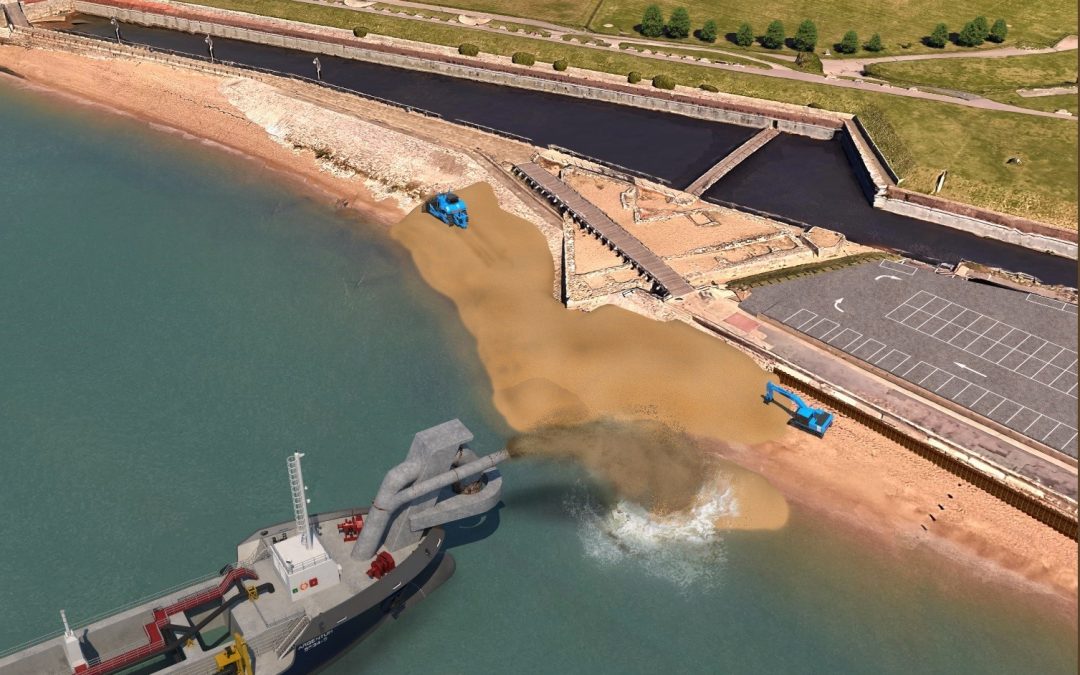Global shipping markets underwent a dramatic shift last year and so far in 2025, as escalating maritime security threats in the Red Sea forced ships to reroute, adding days to voyage times and reshaping bunker fuel demand across key alternate ports. has led many shipping companies to bypass the Suez Canal route. This has increased pressure on infrastructure at ports in the Mediterranean, East Africa, South Africa and the ongoing conflict in the Middle East — notably Houthi attacks on commercial ships in the Bab el-Mandeb Strait and the broader Red Sea — Indian Ocean, with ripple effects on supply chains and marine fuel logistics.
Ship-to-ship (STS) and bunker activities have surged at alternate ports such as Sohar, Dammam and Colombo and along the South African coastline. The infographic above highlights how ships now cluster around safer maritime corridors, altering demand and delivery patterns for marine fuels.
Ship-to-ship (STS) and bunker activities have surged at alternate ports such as Sohar, Dammam and Colombo and along the South African coastline.
“Operators shift to safer lanes despite longer voyages and higher fuel use. Early nominations at Piraeus, Istanbul, and key hubs help mitigate premium risks,” a bunker trader said last month.
Container liners are still largely avoiding the Red Sea, traders observed.
According to a regional trader, the ports of Jeddah and Yanbu witnessed a drop in traffic due to rerouting. At the same time, congestion and fuel shortages increased at alternative ports like Dammam and Sohar.
“Some vessels are transiting with AIS destinations marked as ‘Armed guards onboard’, a sign of heightened security measures onboard amid growing threats,” a Dubai-based trader said.
South Africa sees an uptick in bunker, STS calls
In South Africa, ports such as Cape Town and Durban saw a rise in bunker calls as vessels diverted from the Red Sea-Suez route.
“Bunker fuel demand spiked up to 30%, stressing infrastructure,” another trader said. “Supply delays and price hikes were reported due to increased demand. Insurance premiums for transiting Red Sea areas rose sharply.”
According to a Bunkerworld survey, bunker sales at Mauritius’ Port Louis nearly doubled in 2024 to about 1 million mt from 500,000 mt in 2023, as ships diverted around the Cape of Good Hope amid Red Sea security risks.
“Volume-wise, the market has been tepid the entire year,” a South Africa-based trader said. “When the conflict began, we expected more bunker callings in South African ports; however, this did not materialize. Higher prices made clients prefer to call Port Louis instead; so, we saw more bunker volume in Port Louis and more vessel volume in South Africa. However, the bunker demand did not materialize in the way suppliers expected.”
Market participants said they were back to seeing “normal demand” as earlier, and the South African market is “quiet,” lacking any major change.
Platts assessed marine fuel 0.5% delivered Cape Town at $644/mt on July 4, at a $34/mt premium to marine fuel 0.5% delivered Durban.
Strait of Hormuz and the Israel-Iran tensions
While disruptions persist in the Red Sea, traffic through the Strait of Hormuz — a key artery for global oil and LNG flows — has remained relatively stable.
“Shipping firms have maintained normal operations through the chokepoint,” a trader said. “Heightened naval presence and risk management are sustaining confidence in the route despite the volatility,” he added.
The April-June period saw elevated tensions between Israel and Iran, including reported drone and missile attacks, yet no significant changes were observed in vessel traffic, as confirmed by maritime analytics firms.
“The Israel-Iran conflict had led to a spike in prices due to fears of supply disruptions,” a Dubai-based trader said. “This high price increase led to decreased demand, and charters dropped interest in crossing the Strait of Hormuz, where 22% of tankers typically pass. Because of the conflict, the number of tanker vessels calling in has reduced.”
Market sources said that while prices “rose temporarily” due to the conflict, they are now “stabilizing and beginning to decline again.” The tensions between Israel and Iran “primarily affected the Port of Fujairah,” while Jebel Ali remained “relatively stable” as a hub for container tankers.
“Looking ahead, the onset of the monsoon season is likely to further diminish demand, negatively impacting our volumes,” the trader added.
Oman bunker market feels VLSFO supply pressure
In Oman, gasoil availability is stable, while limited production of very low sulfur fuel oil (VLSFO) has led to strained availability.
“We didn’t face any disruption due to price increase,” said a local supplier. “But the refinery isn’t producing VLSFO, and the government wasn’t ready to import. Only Oasis Energy and BP were allowed to bring it in.”
Platts assessed low sulfur marine gasoil 0.1%S delivered Salalah at $865/mt, down $4/mt in the week ended July 4, while marine gasoil delivered Muscat was assessed at a $33/mt premium to marine gasoil delivered Sohar at $844/mt.
Source: Platts





